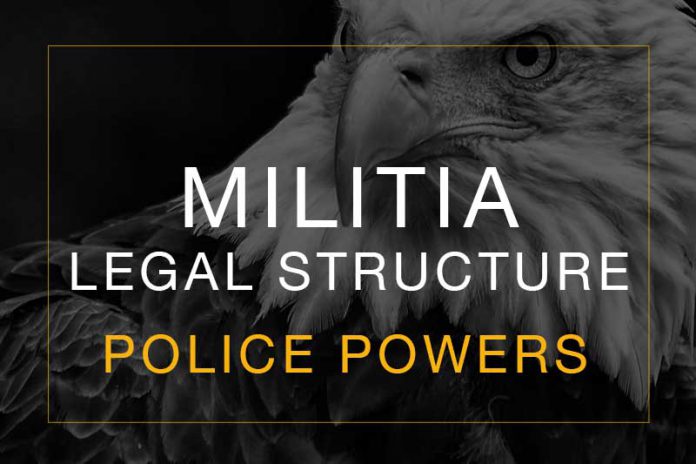Last Updated on March 8, 2023 by Constitutional Militia
“Police Powers”: Entrusted to the Militia as Governmental Institutions
From the earliest days in the American colonies, the Militia were empowered to execute the laws against criminal activities. Execution of the laws is a governmental function, which the Militia performed as governmental institutions. For example, Virginia empowered her Militia to execute the laws against such criminal activities:
• [1676] “WHEREAS of late there hath bin many unlawfull tumults, routs and riotts in divers parts of this country, for prevention of such insolences, and punishing offenders in that kind, * * * Be it therefore enacted * * * , that every respective officer and magistrate within this countrey, civill and military, from a constable to the highest civill magistrate, and from the lowest to the highest militia officer, be hereby impowered and strictly commanded for the suppressing and punishing all such unlawfull assemblies, routs, riotts and tumults, to use all lawfull wayes, authoritie, power and command, and whosoever shall be at any time disobedient to any the lawfull commands of any such civill or military officer or magistrate either in assisting, suppressing, quieting and punishing of any unlawfull assemblyes, routs or tumults * * * shall be accounted, judged and punished as mutinous and rebellious.”[1]
• [1707] “It is * * * ordered that * * * Majr Harrison have Power to take under his Commd so many of the Militia of Surry County as he shall think Convenient for the better apprehending [certain suspected] murderers” among the Tuscaruro Indians.[2]
• [1711] “Ordered that a detachment of the Militia * * * be forthwith sent to the Maherine [Indian] town to make Search for [certain] suspected [stolen] goods, and that upon discovery thereof they sieze all the Men of that Nation and send them under a guard to Williamsburgh in order to be examined and tryed[.]”[3]
• [1732] When “a Number of the meaner sort of People of [Prince William] County consisting of fifty Men were got together in Arms designing * * * to destroy the Publick Warehouses in that & the adjacent Counties expecting to be joyn’d by other Malecontents from the neighbouring Counties”, the Governor and his Council determined that, “for the more effectual Suppressing the Insurrection it is necessary that Orders be forthwith Issued to the Comanding Officers of the Militia * * * to call together the several Troops & Companies under their respective Comands * * * & in Case the Mutineers * * * should presume to Continue in Arms that they then march agt & endeavour to suppress them”.[4]
Revitalization of “the Militia of the several States” along strict constitutional lines would establish local law enforcement agencies as a subset of the Militia. This would enable local Militiamen to provide assistance to first responders in the event of natural disasters and suppression of criminal activity.
As State government institutions, a revitalized constitutional Militia would be a tangible check against police brutality, as well as a check against any corrupt or incompetent government officials responsible for prosecuting criminal behavior within the local law enforcement apparatus.





























